Abstract
1. Reflex changes in wall tension of the lateral saphenous vein of one hind limb, the splenic veins and capsule, and the resistance vessels of the other hind limb caused by changes in baroreceptor activity were measured in vagotomized dogs under thiopentone-chloralose anaesthesia.
2. Three different methods were used to alter pressure in one or both carotid sinuses. (1) Both carotid sinuses were vascularly isolated and filled with fully oxygenated Krebs—Ringer bicarbonate solution (pH 7·4) from a reservoir in which the pressure could be altered at will. (2) One sinus was denervated, and the contralateral sinus was perfused with arterial blood at different flow rates. (3) One sinus was denervated, and the innervated sinus was perfused with arterial blood at constant flow, the pressure being altered by changing the outflow resistance.
3. The left saphenous vein was perfused at constant flow with autologous blood; changes in perfusion pressure were used as a measure of changes in veno-motor activity. The right common iliac artery was perfused at constant flow to measure changes in resistance vessel activity. Blood flow through the spleen was temporarily arrested, trapping a fixed volume of blood in the organ. Under these conditions, changes in splenic vein pressure were a measure of changes in smooth-muscle tension in the splenic capsule and veins.
4. In order to assess the responses to baroreceptor stimulation in terms of alterations in sympathetic nerve traffic to different components of the peripheral vascular system, `frequency—response curves' were constructed for spleen, saphenous vein, and limb resistance vessels by electrical stimulation of the splenic nerves and lumbar sympathetic chains.
5. The saphenous vein showed no consistent response to changes in baroreceptor activity. Reduction in carotid sinus pressure from 180 to 100 mm Hg caused an increase in venous pressure in the isovolumetric spleen and in the iliac artery perfusion pressure. These results were confirmed by electrical stimulation of the carotid sinus nerve. Whereas the peak responses of the limb resistance vessels corresponded to an increase in lumbar sympathetic nerve traffic of 6-10 c/s, the maximal splenic responses were equivalent to an increase in splenic nerve traffic of 1-4 c/s. These results are consistent with selective autonomic nervous control of different components of the peripheral vascular system.
Full text
PDF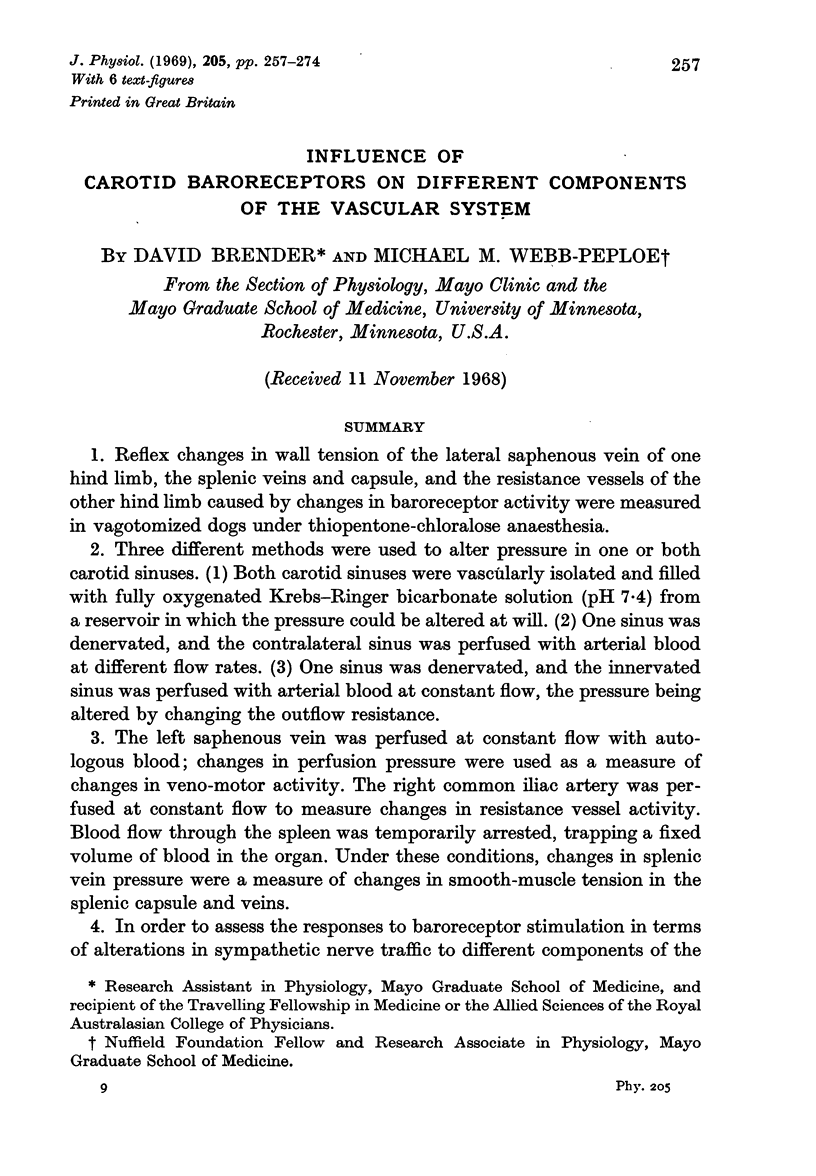
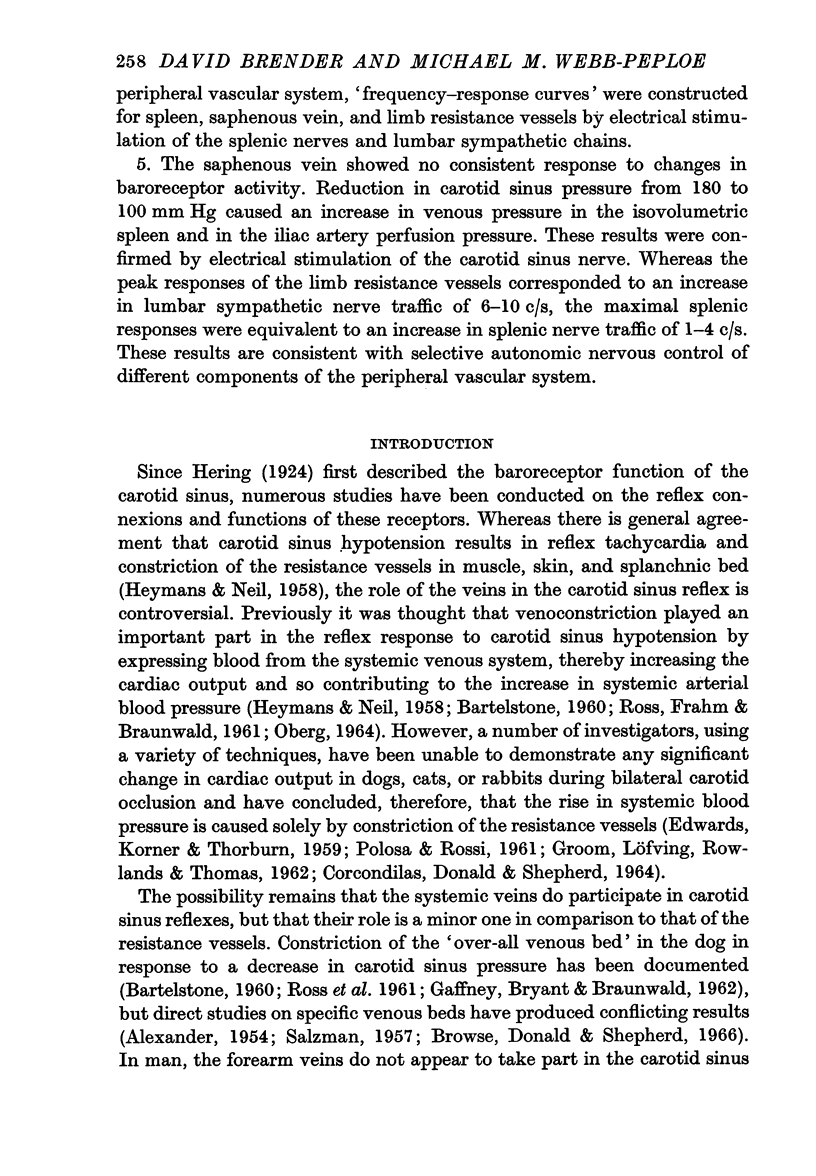
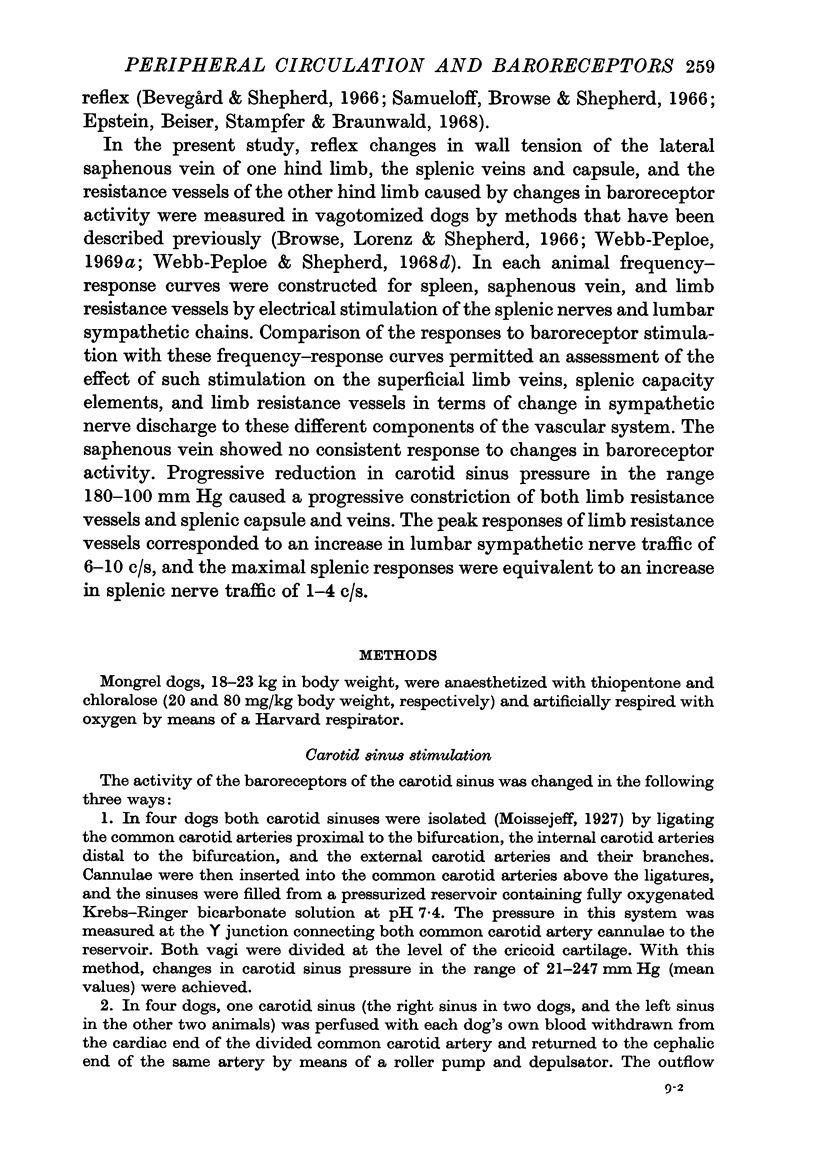
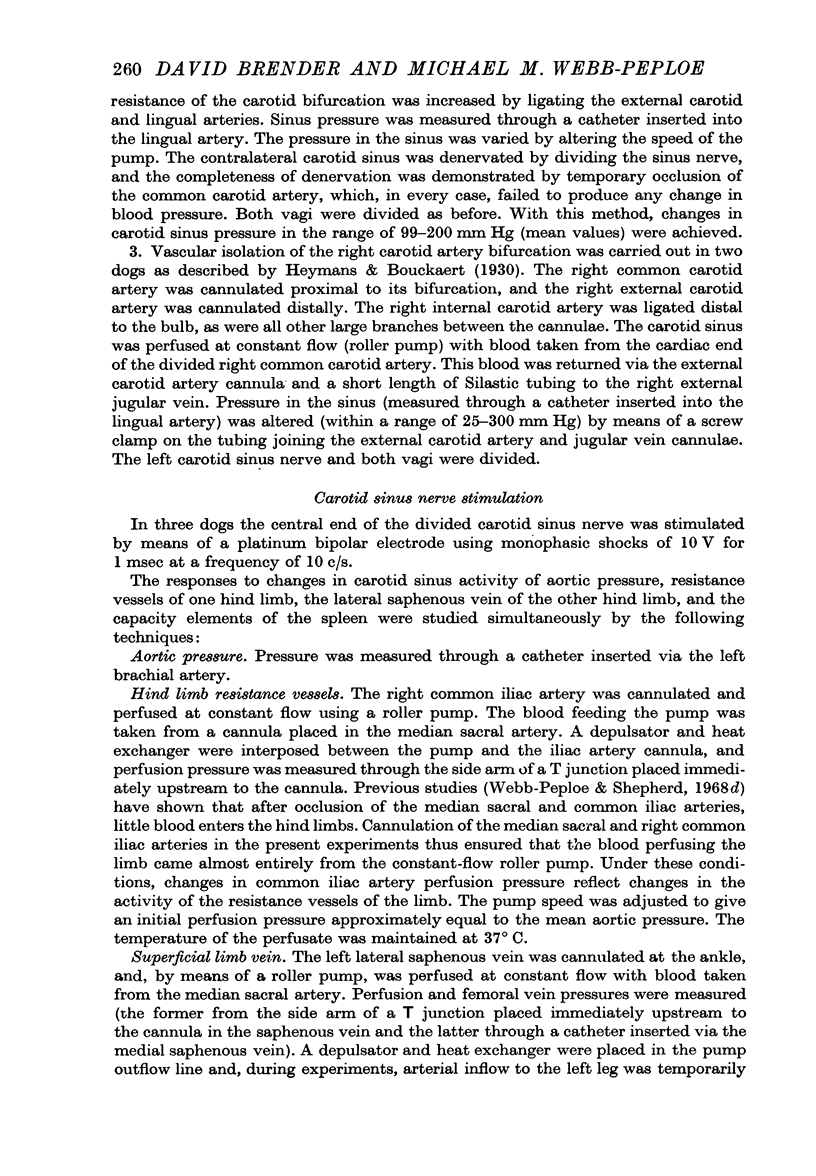
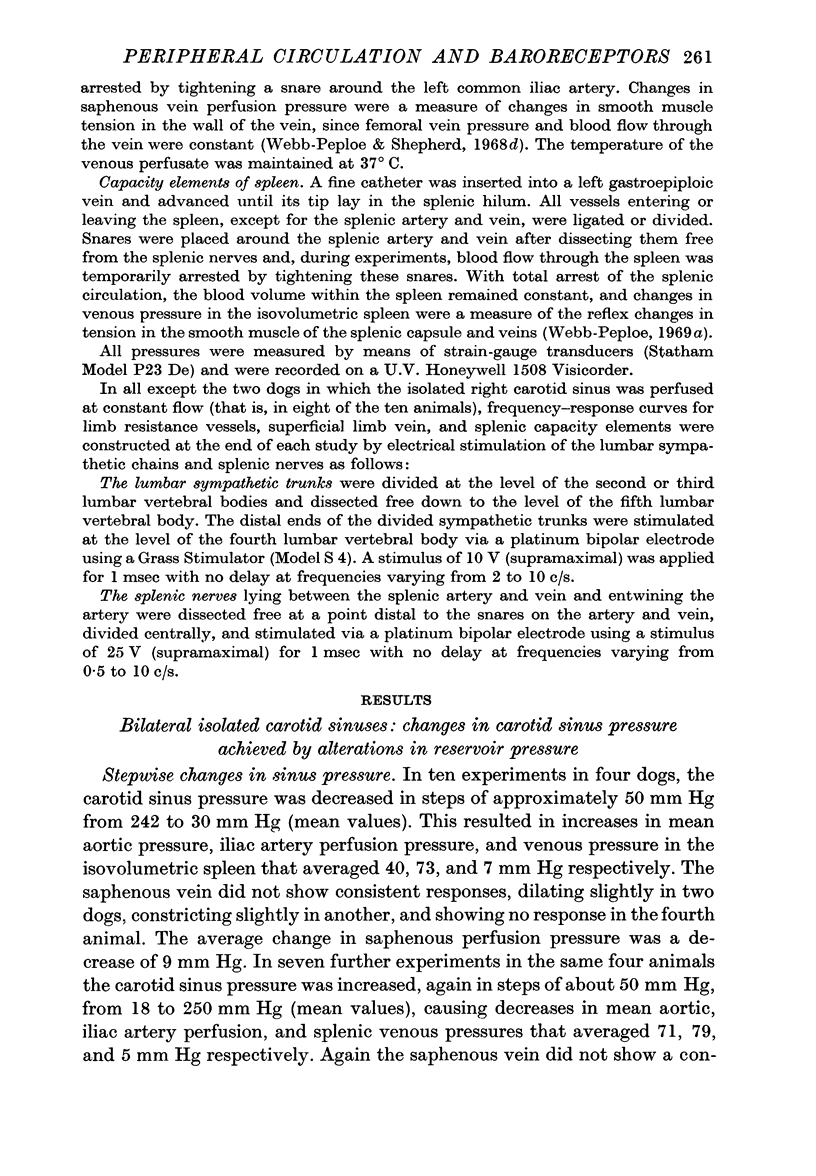
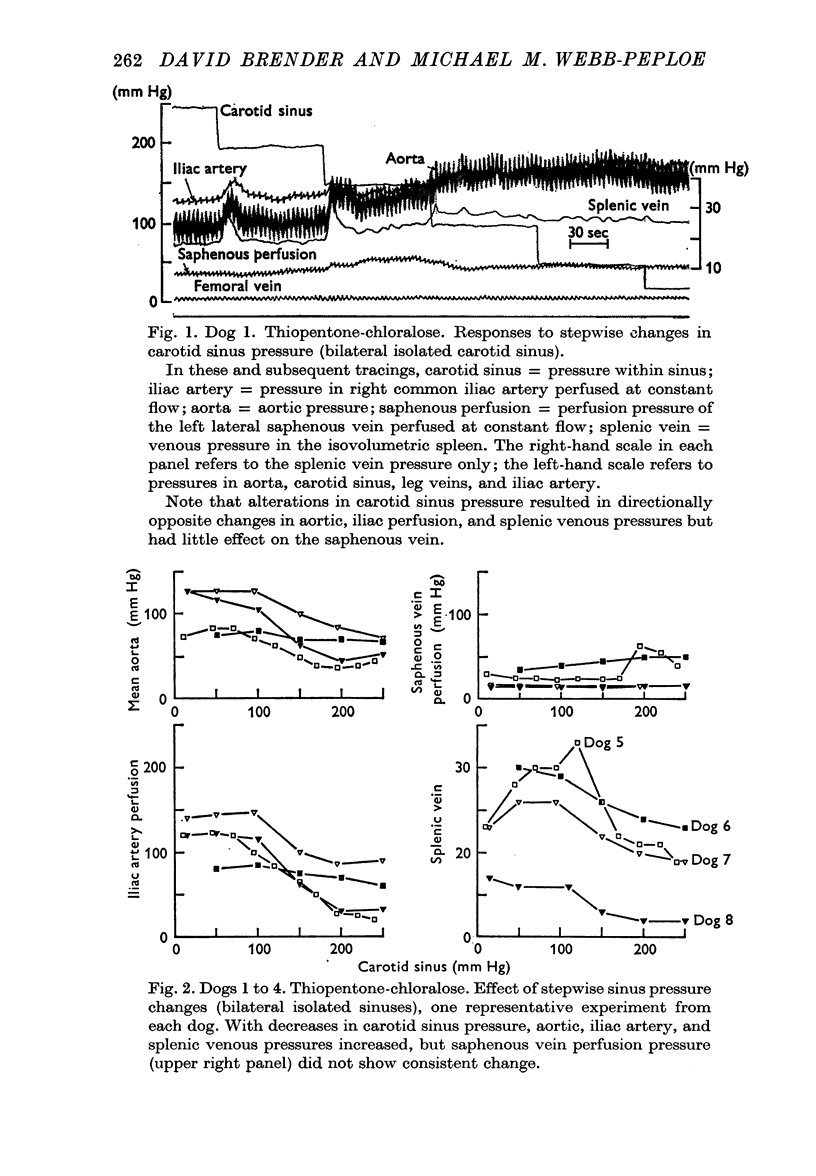
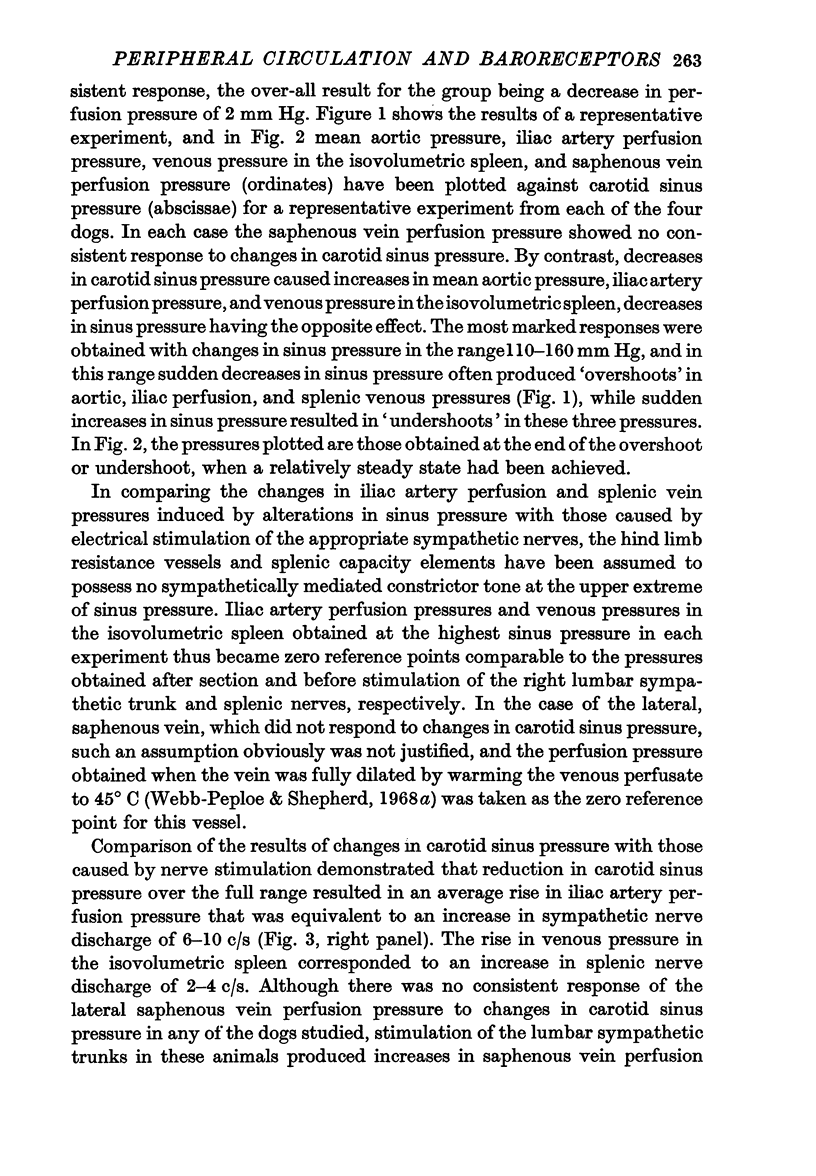
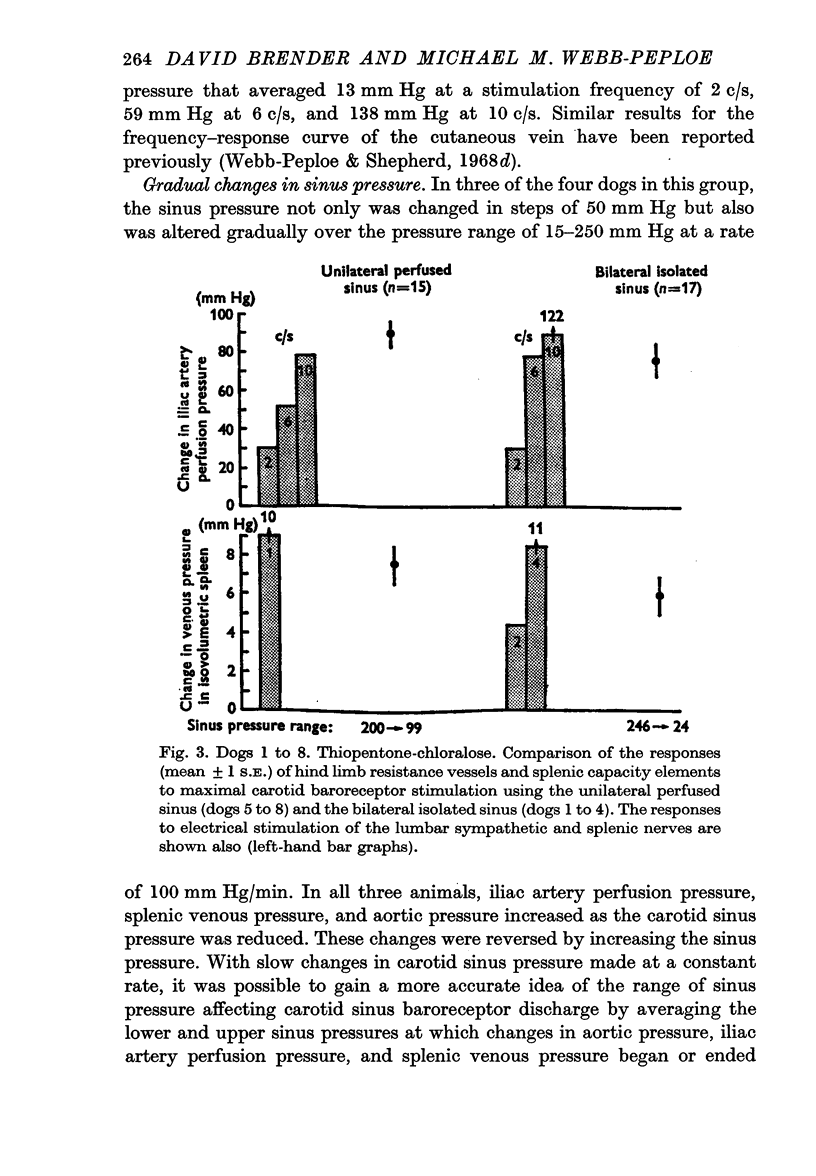
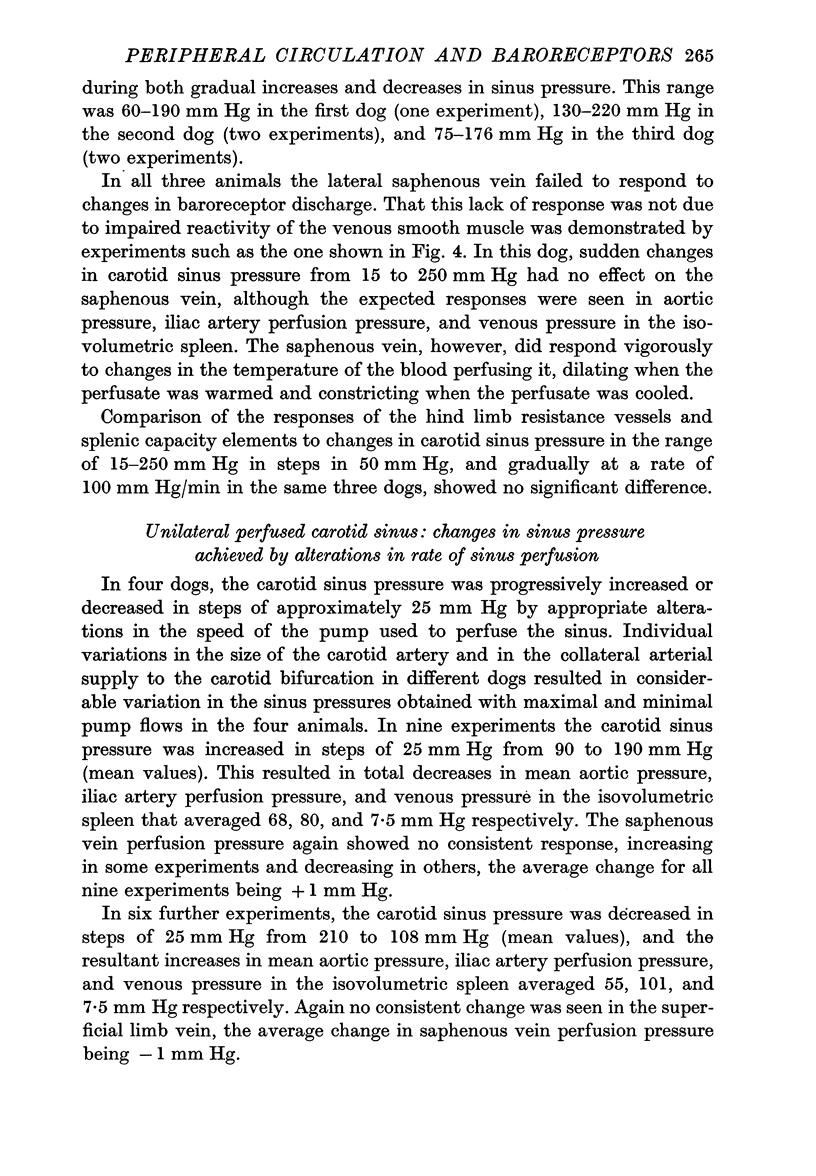
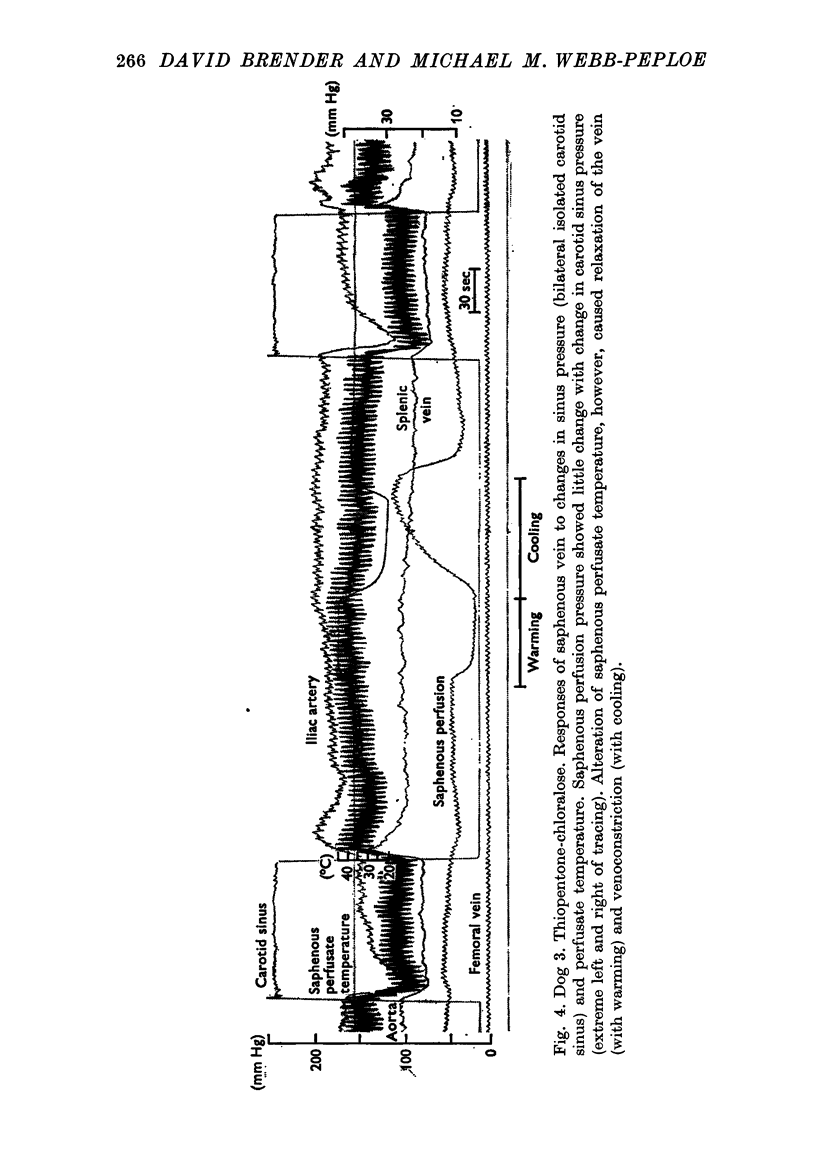
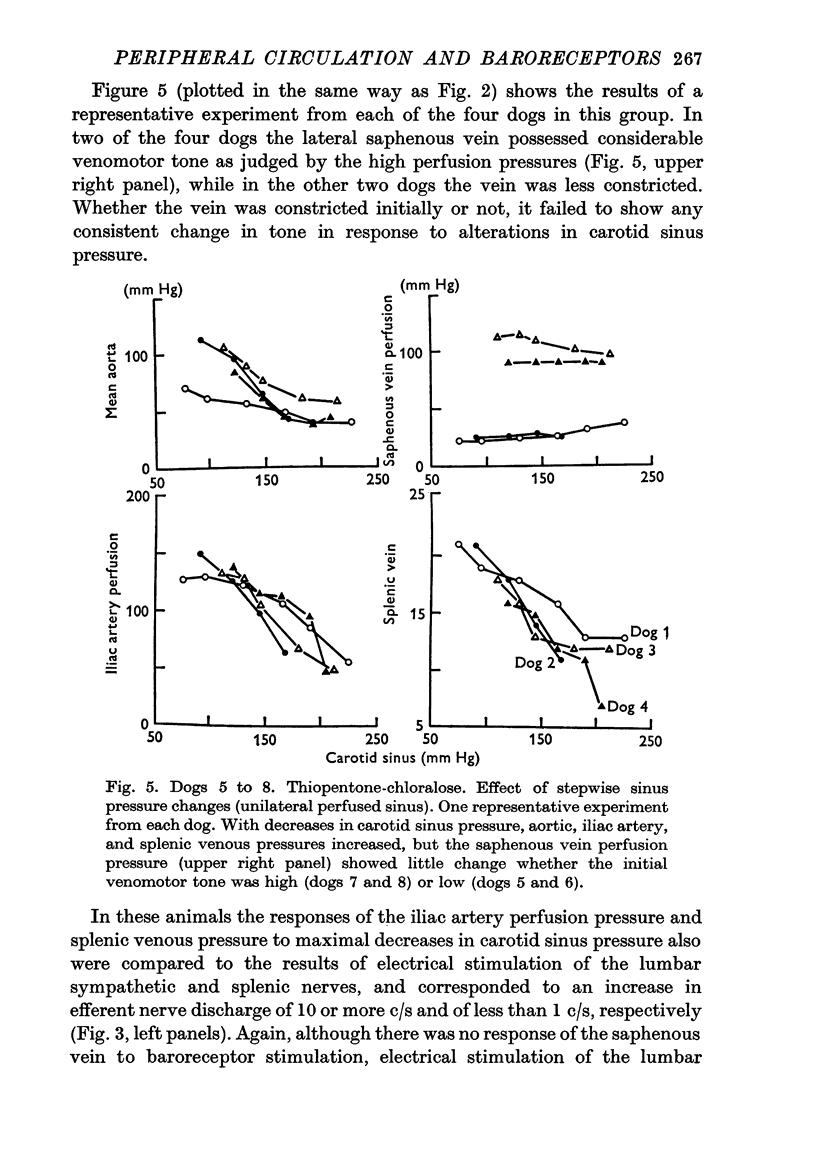
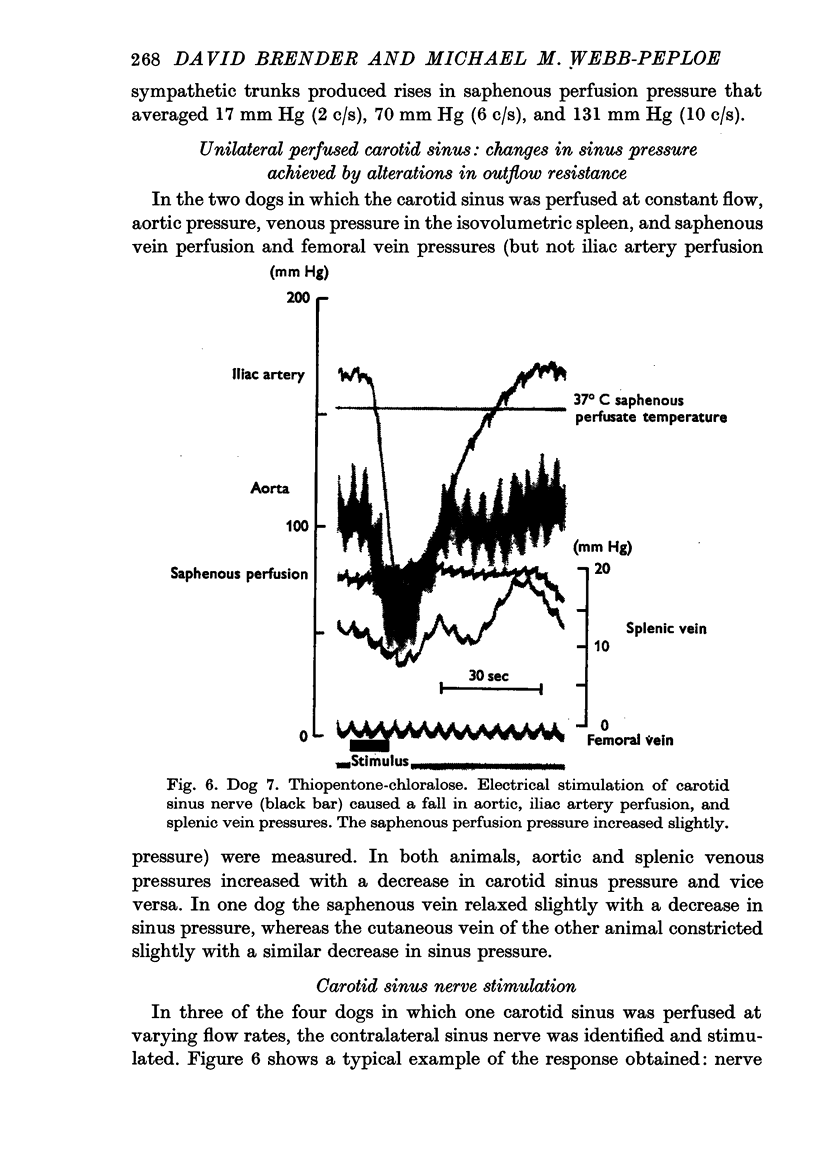
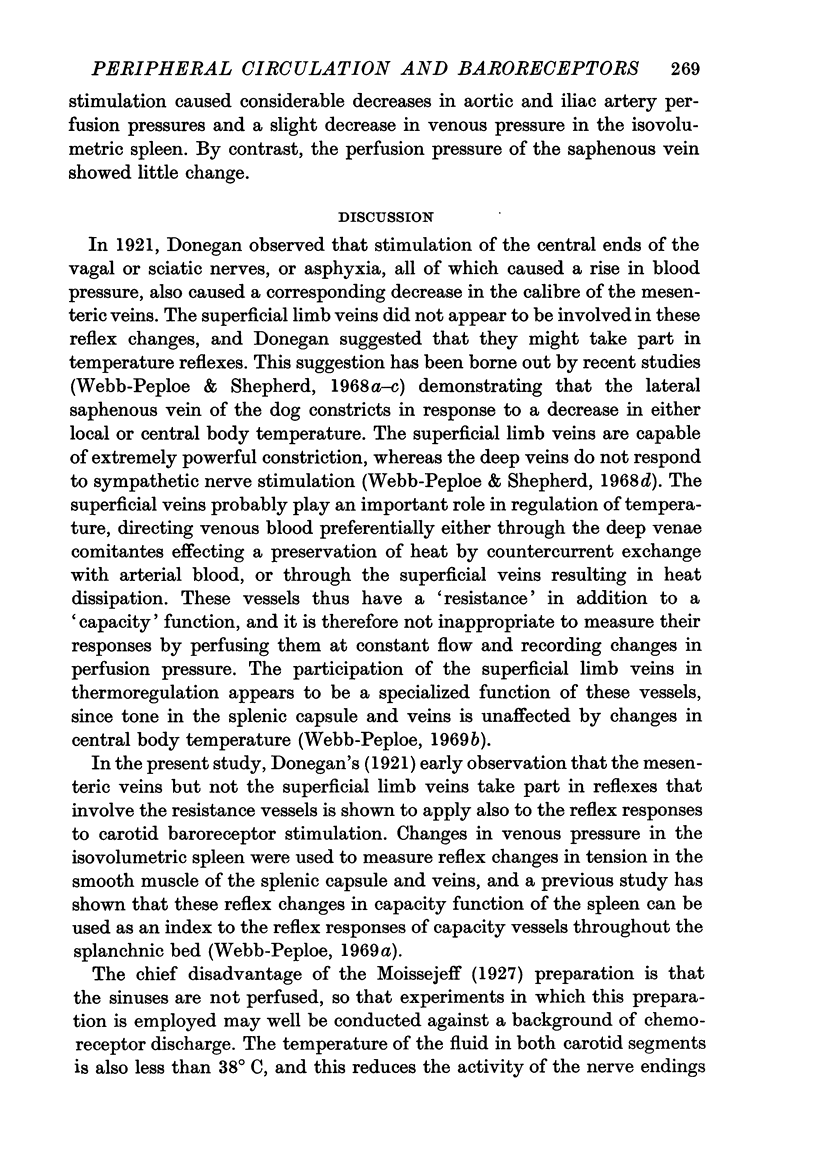
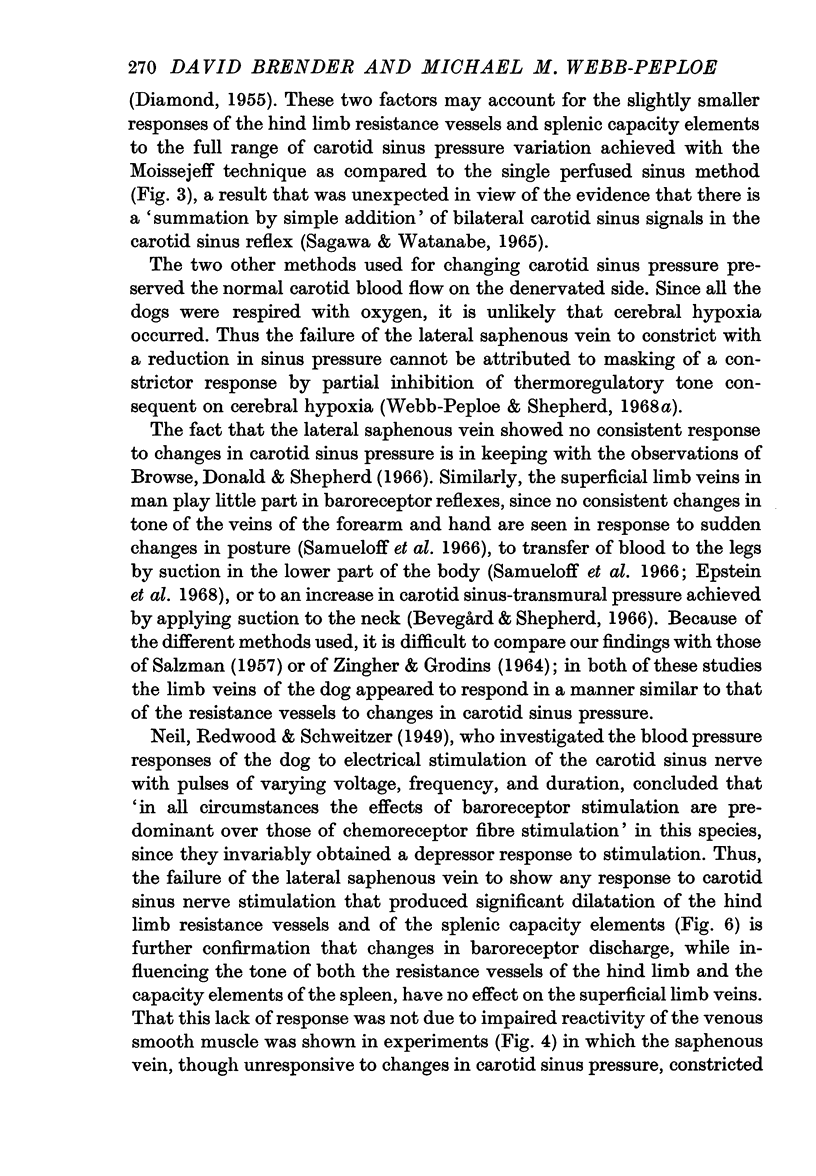
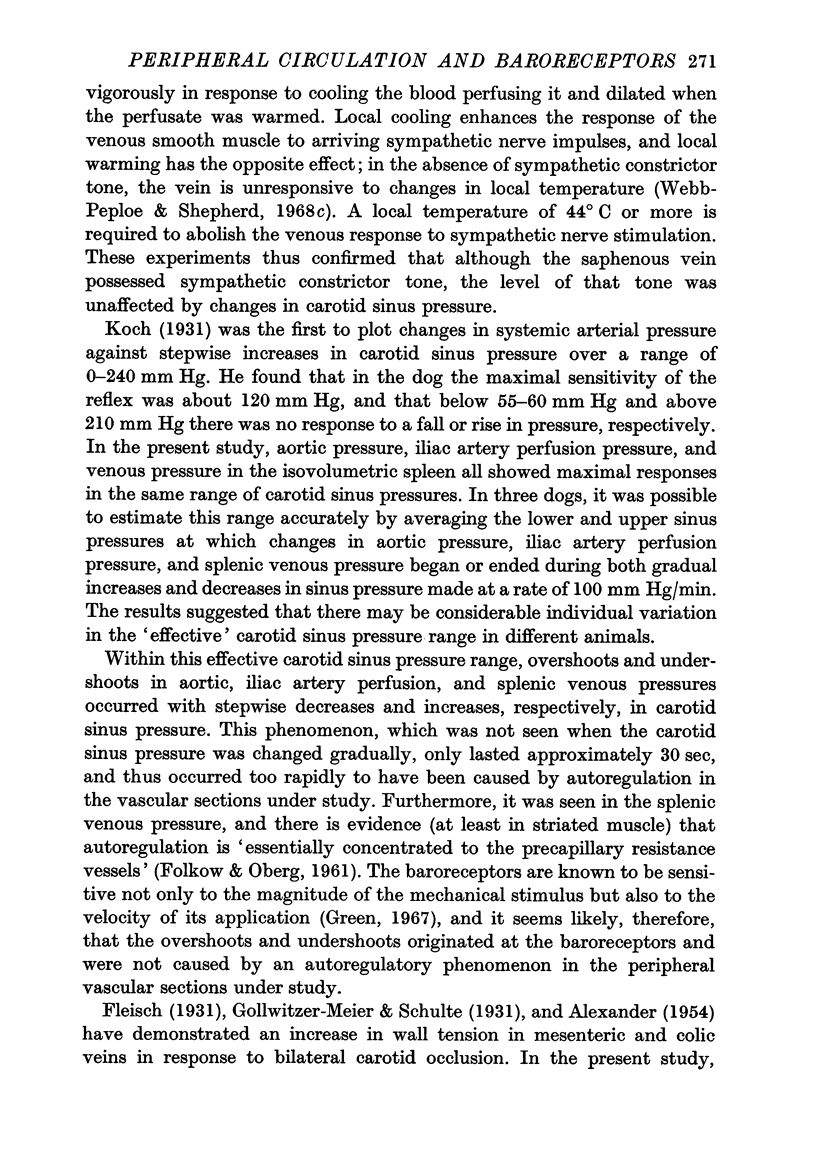
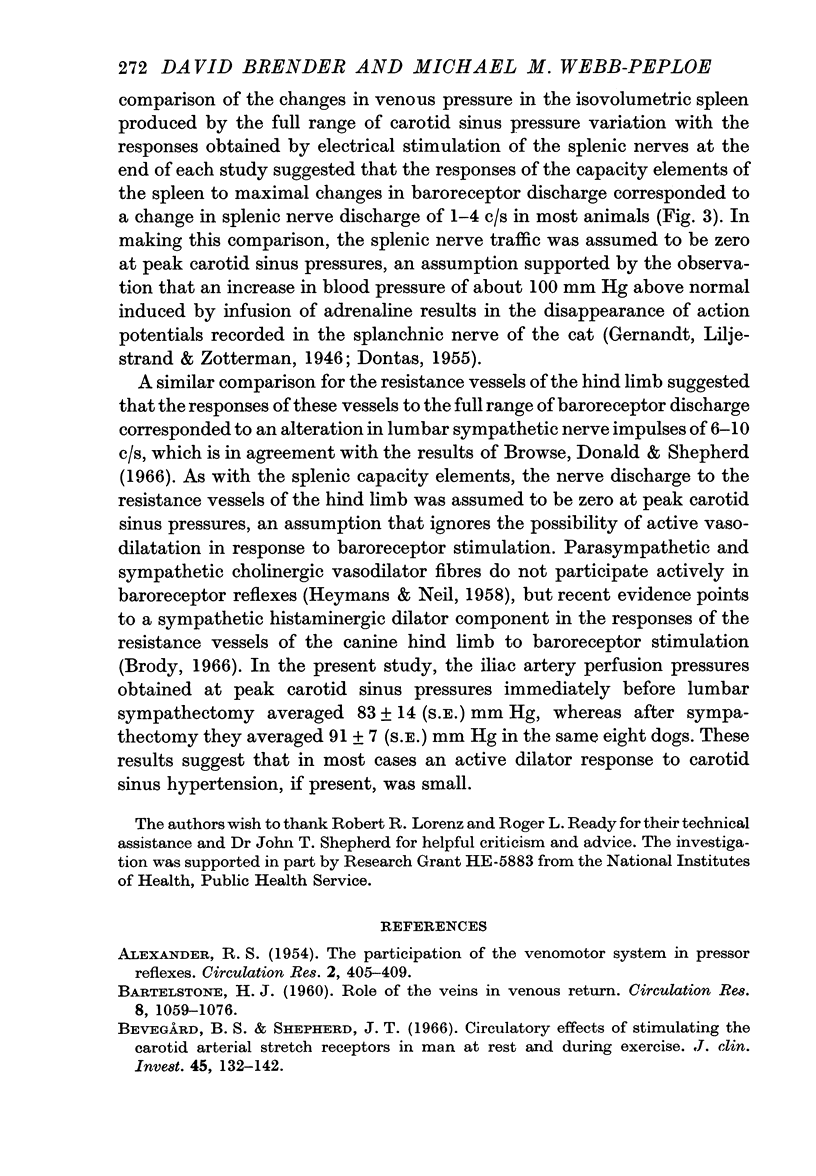
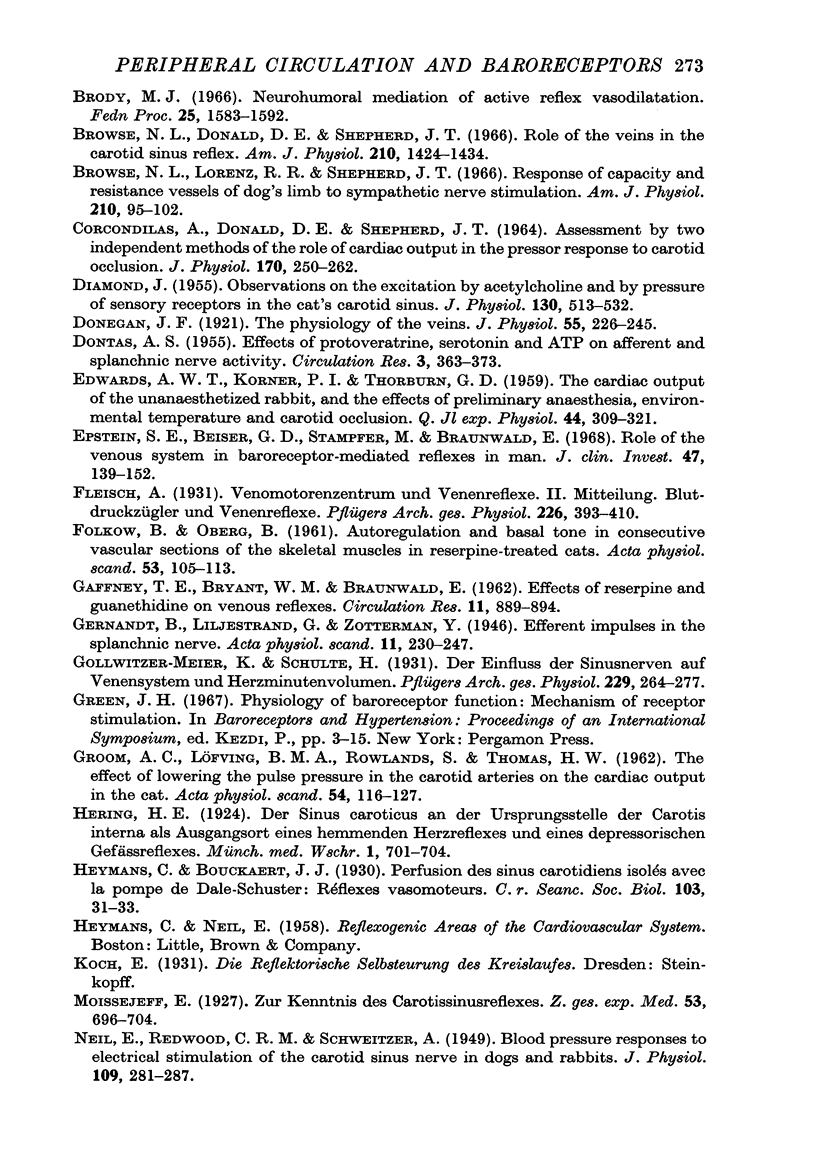
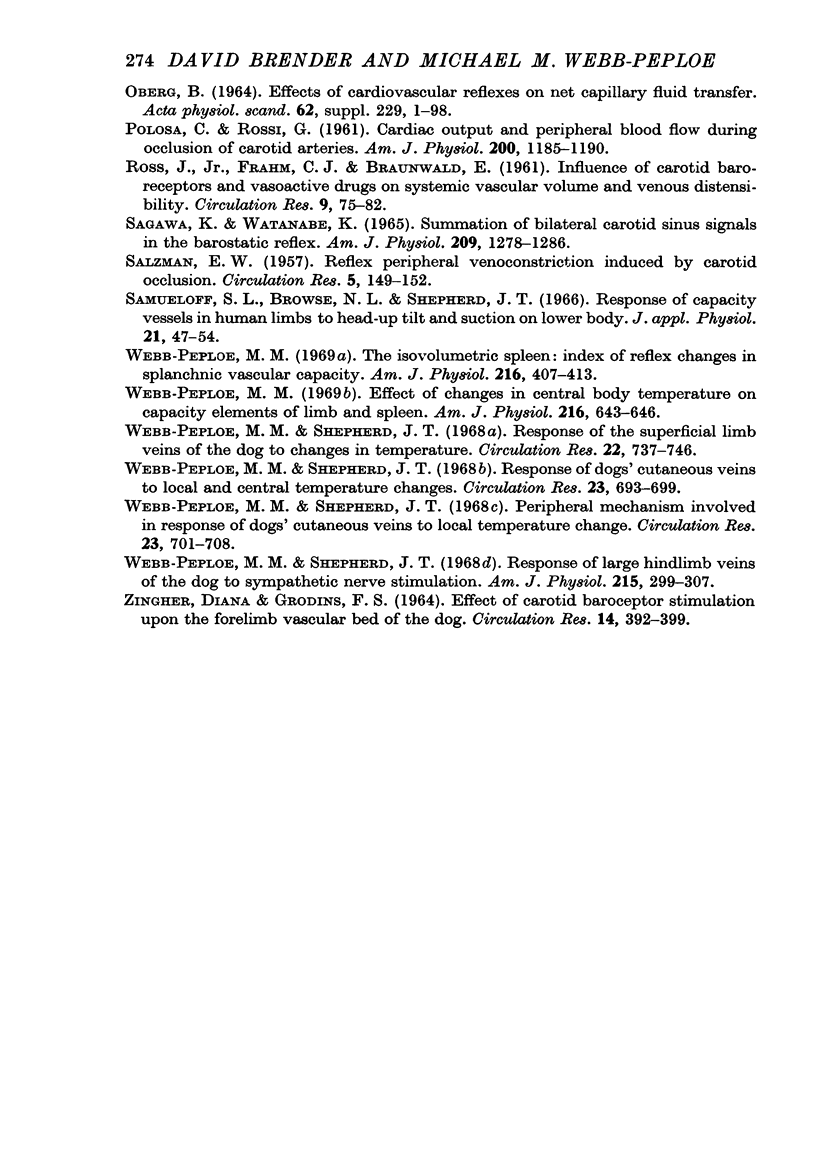
Selected References
These references are in PubMed. This may not be the complete list of references from this article.
- ALEXANDER R. S. The participation of the venomotor system in pressor reflexes. Circ Res. 1954 Sep;2(5):405–409. doi: 10.1161/01.res.2.5.405. [DOI] [PubMed] [Google Scholar]
- BARTELSTONE H. J. Role of the veins in venous retunr. Circ Res. 1960 Sep;8:1059–1076. doi: 10.1161/01.res.8.5.1059. [DOI] [PubMed] [Google Scholar]
- Bevegård B. S., Shepherd J. T. Circulatory effects of stimulating the carotid arterial stretch receptors in man at rest and during exercise. J Clin Invest. 1966 Jan;45(1):132–142. doi: 10.1172/JCI105317. [DOI] [PMC free article] [PubMed] [Google Scholar]
- Brody M. J. Neurohumoral mediation of active reflex vasodilatation. Fed Proc. 1966 Nov-Dec;25(6):1583–1592. [PubMed] [Google Scholar]
- Browse N. L., Donald D. E., Shepherd J. T. Role of the veins in the carotid sinus reflex. Am J Physiol. 1966 Jun;210(6):1424–1434. doi: 10.1152/ajplegacy.1966.210.6.1424. [DOI] [PubMed] [Google Scholar]
- Browse N. L., Lorenz R. R., Shepherd J. T. Response of capacity and resistance vessels of dog's limb to sympathetic nerve stimulation. Am J Physiol. 1966 Jan;210(1):95–102. doi: 10.1152/ajplegacy.1966.210.1.95. [DOI] [PubMed] [Google Scholar]
- CORCONDILAS A., DONALD D. E., SHEPHERD J. T. ASSESSMENT BY TWO INDEPENDENT METHODS OF THE ROLE OF CARDIAC OUTPUT IN THE PRESSOR RESPONSE TO CAROTID OCCLUSION. J Physiol. 1964 Mar;170:250–262. doi: 10.1113/jphysiol.1964.sp007328. [DOI] [PMC free article] [PubMed] [Google Scholar]
- DIAMOND J. Observations on the excitation by acetylcholine and by pressure of sensory receptors in the cat's carotid sinus. J Physiol. 1955 Dec 29;130(3):513–532. doi: 10.1113/jphysiol.1955.sp005424. [DOI] [PMC free article] [PubMed] [Google Scholar]
- DONTAS A. S. Effects of protoveratrine, serotonin and ATP on afferent and splanchnic nerve activity. Circ Res. 1955 Jul;3(4):363–373. doi: 10.1161/01.res.3.4.363. [DOI] [PubMed] [Google Scholar]
- Donegan J. F. The physiology of the veins. J Physiol. 1921 Aug 3;55(3-4):226–245. doi: 10.1113/jphysiol.1921.sp001964. [DOI] [PMC free article] [PubMed] [Google Scholar]
- EDWARDS A. W., KORNER P. I., THORBURN G. D. The cardiac output of the unanaesthetized rabbit, and the effects of preliminary anaesthesia, environmental temperature and carotid occlusion. Q J Exp Physiol Cogn Med Sci. 1959 Jul;44:309–321. doi: 10.1113/expphysiol.1959.sp001403. [DOI] [PubMed] [Google Scholar]
- Epstein S. E., Beiser G. D., Stampfer M., Braunwald E. Role of the venous system in baroreceptor-mediated reflexes in man. J Clin Invest. 1968 Jan;47(1):139–152. doi: 10.1172/JCI105704. [DOI] [PMC free article] [PubMed] [Google Scholar]
- FOLKOW B., OBERG B. Autoregulation and basal tone in consecutive vascular sections of the skeletal muscles in reserpine-treated cats. Acta Physiol Scand. 1961 Oct;53:105–113. doi: 10.1111/j.1748-1716.1961.tb02268.x. [DOI] [PubMed] [Google Scholar]
- GAFFNEY T. E., BRYANT W. M., BRAUNWALD E. Effects of reserpine and guanethidine on venous reflexes. Circ Res. 1962 Nov;11:889–894. doi: 10.1161/01.res.11.5.889. [DOI] [PubMed] [Google Scholar]
- GROOM A. C., LOFVING B. M., ROWLANDS S., THOMAS H. W. The effect of lowering the pulse pressure in the carotid arteries on the cardiac output in the cat. Acta Physiol Scand. 1962 Feb;54:116–127. doi: 10.1111/j.1748-1716.1962.tb02336.x. [DOI] [PubMed] [Google Scholar]
- NEIL E., REDWOOD C. R. M., SCHWEITZER A. Blood-pressure responses to electrical stimulation of the carotid sinus nerve in dogs and rabbits. J Physiol. 1949 Sep;109(3-4):281–287. doi: 10.1113/jphysiol.1949.sp004392. [DOI] [PMC free article] [PubMed] [Google Scholar]
- POLOSA C., ROSSI G. Cardiac output and peripheral blood flow during occlusion of carotid arteries. Am J Physiol. 1961 Jun;200:1185–1190. doi: 10.1152/ajplegacy.1961.200.6.1185. [DOI] [PubMed] [Google Scholar]
- Sagawa K., Watanabe K. Summation of bilateral carotid sinus signals in the barostatic reflex. Am J Physiol. 1965 Dec;209(6):1278–1286. doi: 10.1152/ajplegacy.1965.209.6.1278. [DOI] [PubMed] [Google Scholar]
- Samueloff S. L., Browse N. L., Shepherd J. T. Response of capacity vessels in human limbs to head-up tilt and suction on lower body. J Appl Physiol. 1966 Jan;21(1):47–54. doi: 10.1152/jappl.1966.21.1.47. [DOI] [PubMed] [Google Scholar]
- Webb-Peploe M. M. Effect of changes in central body temperature on capacity elements of limb and spleen. Am J Physiol. 1969 Mar;216(3):643–646. doi: 10.1152/ajplegacy.1969.216.3.643. [DOI] [PubMed] [Google Scholar]
- Webb-Peploe M. M., Shepherd J. T. Peripheral mechanism involved in response of dog's cutaneous veins to local temperature change. Circ Res. 1968 Dec;23(6):701–708. doi: 10.1161/01.res.23.6.701. [DOI] [PubMed] [Google Scholar]
- Webb-Peploe M. M., Shepherd J. T. Response of dogs' cutaneous veins to local and central temperature changes. Circ Res. 1968 Dec;23(6):693–699. doi: 10.1161/01.res.23.6.693. [DOI] [PubMed] [Google Scholar]
- Webb-Peploe M. M., Shepherd J. T. Response of large hindlimb veins of the dog to sympathetic nerve stimulation. Am J Physiol. 1968 Aug;215(2):299–307. doi: 10.1152/ajplegacy.1968.215.2.299. [DOI] [PubMed] [Google Scholar]
- Webb-Peploe M. M., Shepherd J. T. Responses of the superficial limb veins of the dog to changes in temperature. Circ Res. 1968 Jun;22(6):737–746. doi: 10.1161/01.res.22.6.737. [DOI] [PubMed] [Google Scholar]
- Webb-Peploe M. M. The isovolumetric spleen: index of reflex changes in splanchnic vascular capacity. Am J Physiol. 1969 Feb;216(2):407–413. doi: 10.1152/ajplegacy.1969.216.2.407. [DOI] [PubMed] [Google Scholar]
- ZINGHER D., GRODINS F. S. EFFECT OF CAROTID BAROCEPTOR STIMULATION UPON THE FORELIMB VASCULAR BED OF THE DOG. Circ Res. 1964 May;14:392–399. doi: 10.1161/01.res.14.5.392. [DOI] [PubMed] [Google Scholar]


